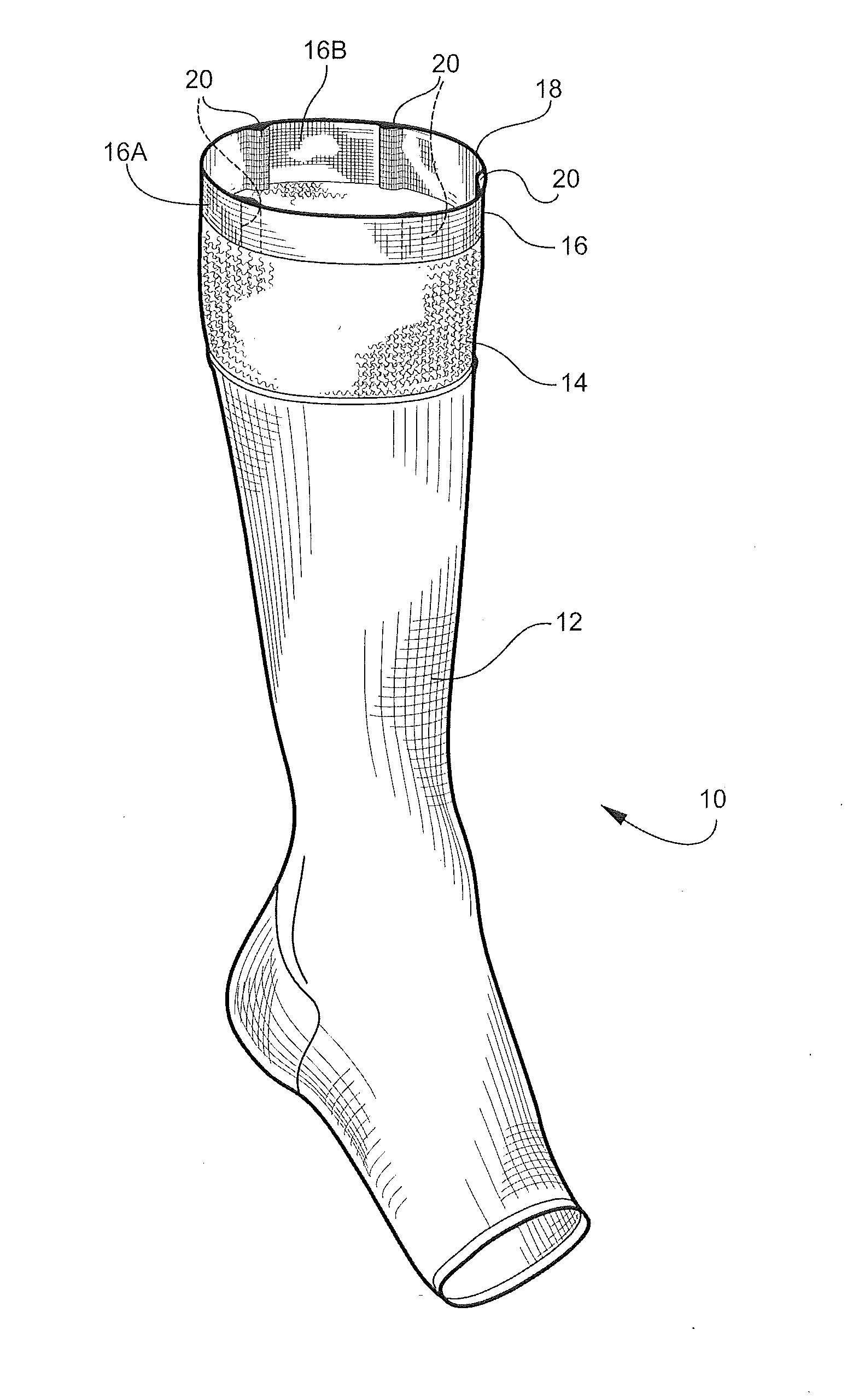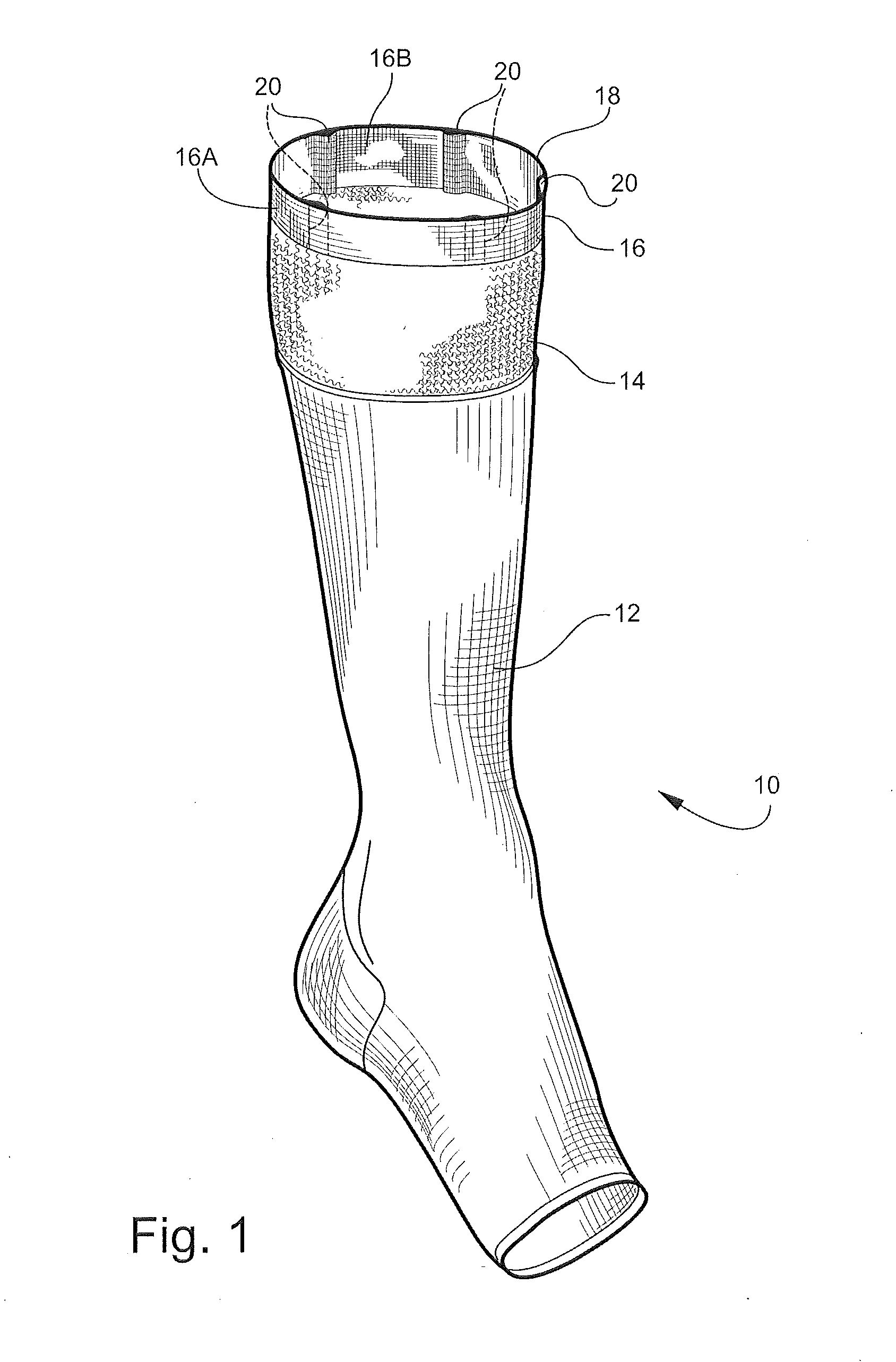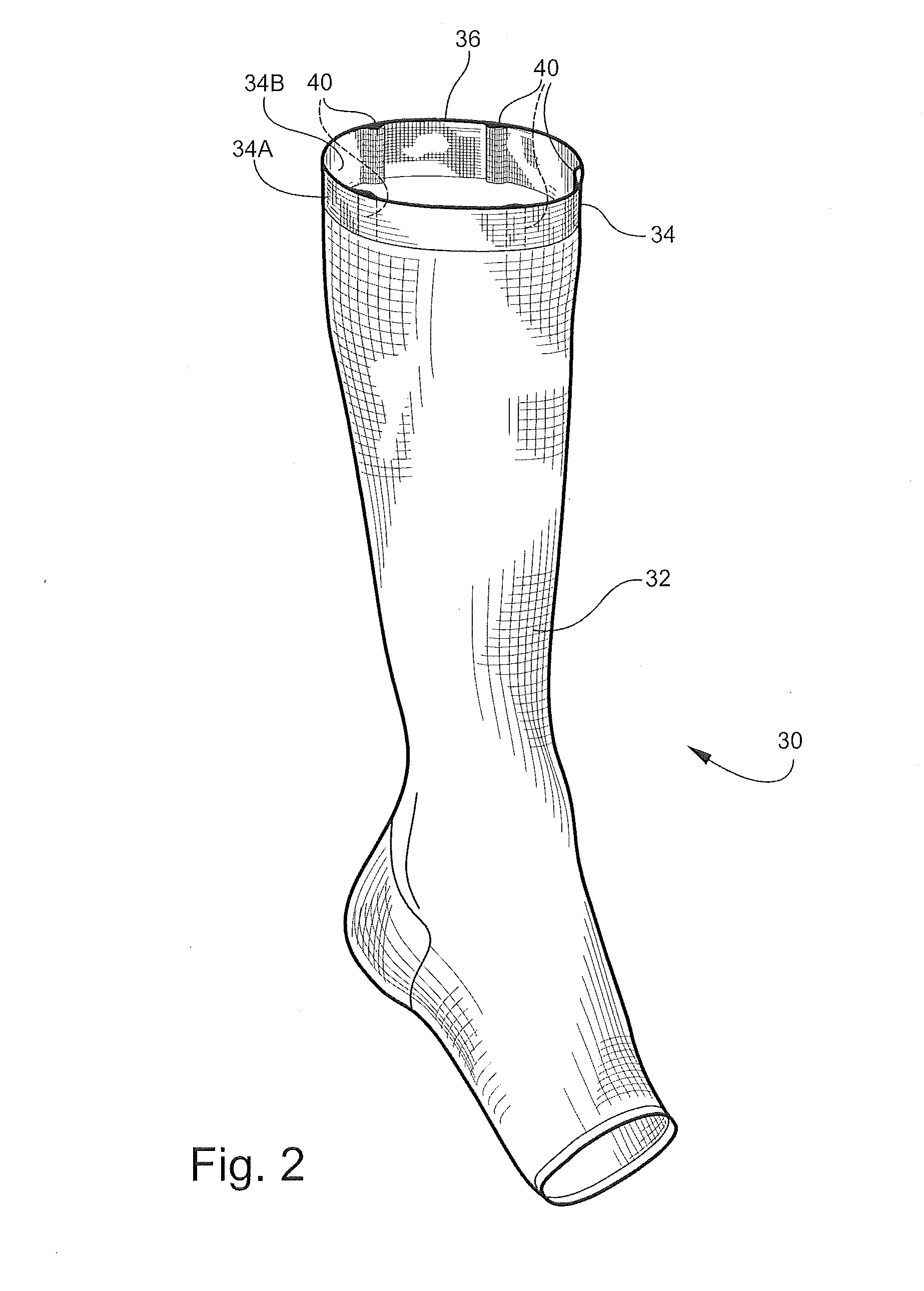Therapeutic medical compression garment and method
a compression garment and medical technology, applied in the field of therapeutic tubular compression hosiery garments, can solve the problems of reducing or eliminating detracting from the benefits of the garment, and the wearer having to remove, reduce or eliminate the desired therapeutic effect, so as to reduce the tendency of welts
- Summary
- Abstract
- Description
- Claims
- Application Information
AI Technical Summary
Benefits of technology
Problems solved by technology
Method used
Image
Examples
Embodiment Construction
[0068]Referring now specifically to the drawings, a therapeutic medical compression garment in the form of a compression stocking is shown broadly at reference numeral 10. While, as noted above, the invention is described in this application for purposes of illustration as a compression stocking, the invention also includes any garments, such as stockings, sleeves, socks, hose, panty-type hose and the like that when worn assist in the management of venous or lymphatic disorders and / or thrombosis in the limb of a wearer.
[0069]Stocking 10 according to the particular embodiment of FIG. 1 has a body portion 12, an anti-slip portion 14 formed as part of the stocking's body fabric located toward the upper end of the stocking 10, and a welt 16 at the top end of the stocking 10.
[0070]The body 12 of the stocking 10 is preferably circular knit in a manner known to those skilled in the art, for example, utilizing jersey stitches. The stretchable textured yarn is knit in jersey courses. The sto...
PUM
| Property | Measurement | Unit |
|---|---|---|
| angle | aaaaa | aaaaa |
| circumference | aaaaa | aaaaa |
| structure | aaaaa | aaaaa |
Abstract
Description
Claims
Application Information
 Login to View More
Login to View More - R&D
- Intellectual Property
- Life Sciences
- Materials
- Tech Scout
- Unparalleled Data Quality
- Higher Quality Content
- 60% Fewer Hallucinations
Browse by: Latest US Patents, China's latest patents, Technical Efficacy Thesaurus, Application Domain, Technology Topic, Popular Technical Reports.
© 2025 PatSnap. All rights reserved.Legal|Privacy policy|Modern Slavery Act Transparency Statement|Sitemap|About US| Contact US: help@patsnap.com



